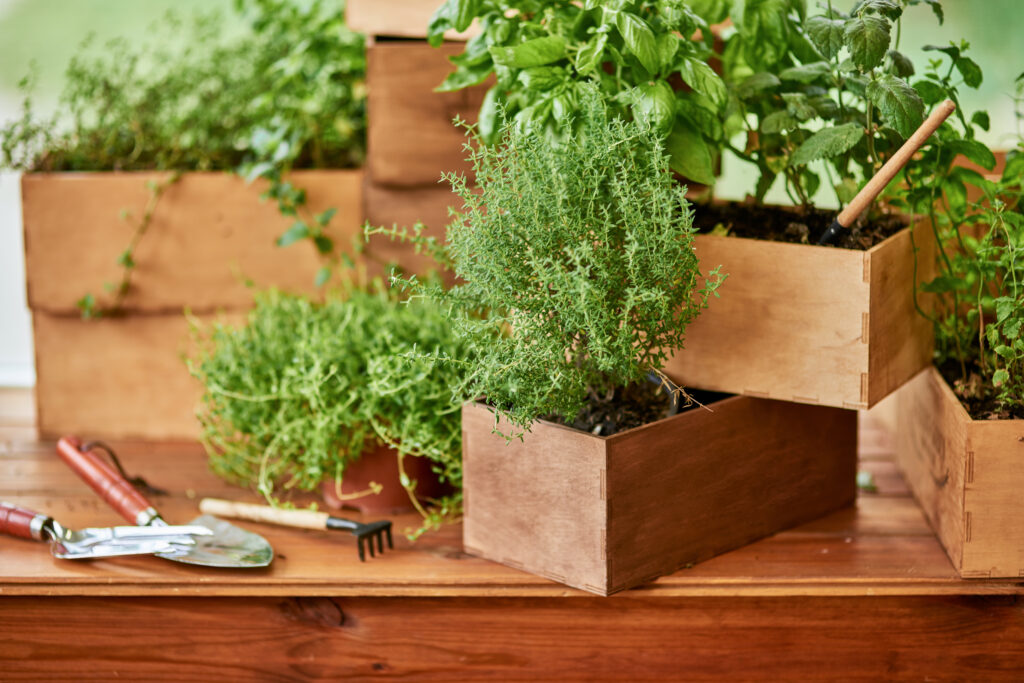Master Herb Container Hacks for Healthier, More Productive Plants
Growing herbs indoors starts with selecting the best container and soil mix for each variety. While a simple pot and standard compost might work for some, others thrive in specialized substrates with different levels of drainage, pH, and nutrient availability. These herb container hacks not only optimize growth but also allow you to match each plant’s unique preferences—resulting in lusher leaves and bolder flavors.
Below, we’ll discuss how to choose the right pot size, the ideal soil or soilless mix, and some expert tips on refining humidity and environmental factors. Whether you’re a seasoned green thumb or a curious hobbyist, these insights will help your indoor herb garden flourish.
Why the Right Container Matters

- Root Development
- Adequate space allows roots to expand, ensuring maximum nutrient uptake
- Cramped pots can lead to stunted growth and reduced yields
- Drainage Control
- Herbs prone to root rot (e.g., basil) need pots with generous drainage holes
- Containers without proper drainage risk waterlogged soil
- Mobility and Placement
- Smaller, lightweight pots can be moved easily for optimal lighting
- Larger, heavier containers provide stability but require a dedicated spot
Advanced Container Hacks and Soil Mixes
1. Specialized Substrates
- Mediterranean Herbs (Rosemary, Thyme, Oregano)
- Prefer sandy, well-draining mixes
- Combine potting soil with coarse sand or perlite (2:1 ratio)
- Moisture-Loving Herbs (Mint, Basil, Cilantro)
- Need a substrate that retains water without becoming soggy
- Mix potting soil with coco coir or peat moss to hold moisture
2. Exotic Plant Choices
- Thai Basil
- Enjoys rich, loamy soil with moderate moisture levels
- Use a pH-balanced mix around 6.0–7.0
- Shiso (Perilla)
- Does best in slightly acidic soil with good drainage
- Blend standard potting mix with compost for extra nutrients
3. Refined Humidity Control
- Use a pebble tray under containers to slightly raise humidity around the plants
- Monitor with a small hygrometer; aim for 40–60% humidity for most herbs
- Mist plants sparingly if leaves appear too dry, especially in arid indoor climates
Picking the Perfect Pot
Size and Depth
- Short-rooted herbs like chives or parsley can manage in smaller, shallow pots
- Deeper containers suit herbs with extensive root systems (e.g., dill or lemongrass)
Material Considerations
- Terracotta
- Porous, allowing excess moisture to evaporate
- May require more frequent watering
- Plastic or Glazed Ceramic
- Retains moisture longer
- Suitable for thirstier herbs or drier indoor climates
- Fabric Pots
- Promote excellent airflow and root pruning
- Usually need extra attention to prevent drying out
Maintenance Tips for Container Herbs
- Watering Schedule
- Adjust frequency based on pot size and material; smaller or porous containers dry out faster
- Fertilizing
- Add a balanced, water-soluble fertilizer every 4–6 weeks for consistent growth
- Pruning
- Regularly pinch leaves to encourage branching and prevent flowering
- Rotating Pots
- Turn containers weekly for even sunlight exposure
By understanding each herb’s unique requirements—ranging from substrate composition to preferred humidity—you can tailor your pots and soil mixes for optimal plant health. These herb container hacks empower you to grow a diverse array of herbs in the comfort of your own home, even if space is limited. With thoughtful planning, proper drainage, and the right soil formulations, you’ll enjoy fresher flavors and vibrant greenery all year long.




